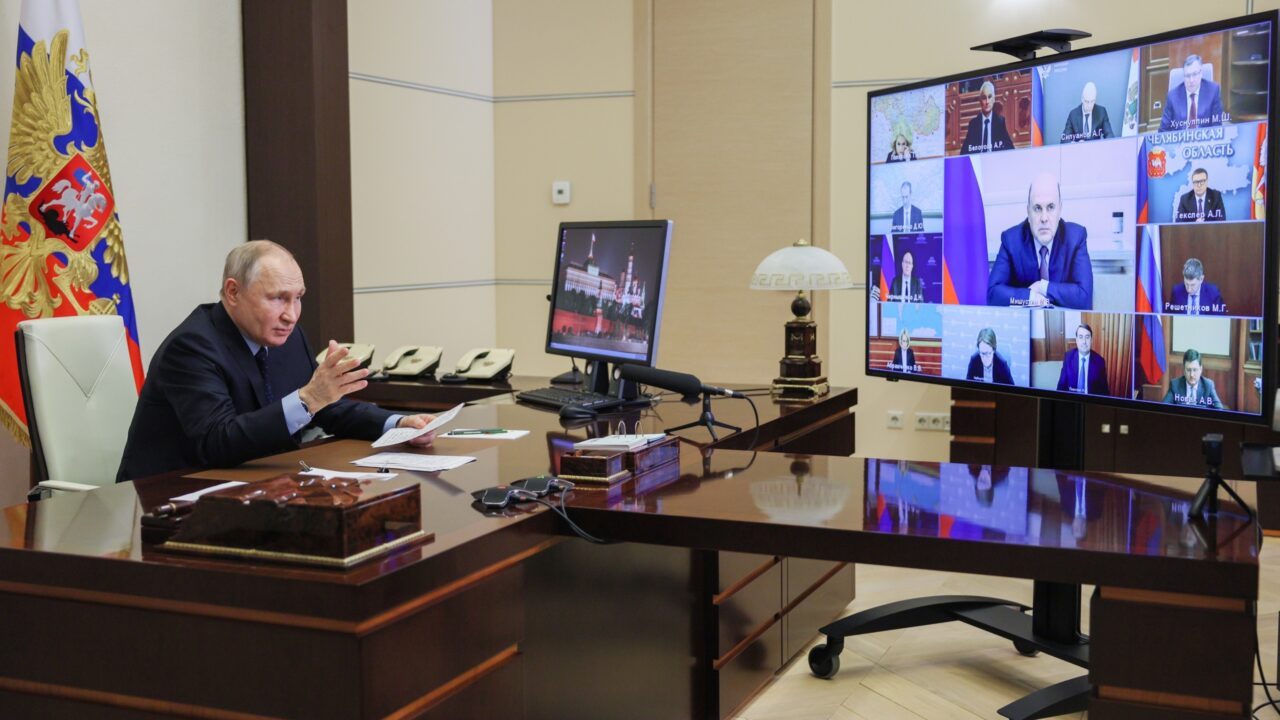The insignificance of Putin’s latest nuclear bluster
Putin’s attention-seeking plan to station nuclear weapons in Belarus underlines his commitment to nuclear risk manipulation – but his blackmail may be losing its potency
In yet another attempt to keep Russia’s nuclear potential in the headlines of Western media, President Vladimir Putin has announced that he may station nuclear weapons in Belarus. This comes after Russia’s refusal to comply with its obligations under the New START nuclear arms control treaty with the United States, and countless veiled and not-so-veiled nuclear threats to rattle the West in its support for Ukraine. Putin’s latest move only underlines what we already know about him: he views arms control as subservient to his imperial ambitions and nuclear risk manipulation as a useful tool to blackmail perceived adversaries. The deployment – if it were to come – would also not change much about the military picture in Europe.
Like Ukraine and Kazakhstan, Belarus inherited nuclear weapons from the Soviet Union: some 81 intercontinental missiles and an unknown number of shorter-range theatre weapons. Belarus’s 1990 declaration of independence aimed to rid the country of these weapons, and the 1994 Budapest Memorandum established a mechanism for removing them to Russia in exchange for security assurances from Washington, London, and Moscow. With the 1997 NATO-Russia Founding Act, in a spirit of mutual risk reduction, NATO members declared that they had “no intention, no plan and no reason to deploy nuclear weapons on the territory of new members” – a posture NATO maintains to this day. Russia, the agreement reaffirmed, had “withdrawn all its nuclear weapons back to its own national territory”.
The gradual reversal of this position began shortly after Belarus’s fraudulent presidential election in 2020, when only Russian intervention could keep dictator Alexander Lukashenko in power. A subsequent constitutional change ended the country’s nuclear-free status. On 25 June 2022, Putin and Lukashenko announced the transfer of nuclear-capable Iskander-M ground-launched ballistic missiles, which have a 500km range, to Belarus and the modification of Belarusian fighter aircraft to be able to carry Russian nuclear weapons. This past weekend, Putin stated that ten Belarusian jets had been retrofitted and that, from July, storage facilities in Belarus could house Russian nuclear warheads.
Putin is trying to have his cake and eat it. Starting in 2015, Russia began accusing the United States and NATO allies of being in violation of the 1968 Treaty on the Non-Proliferation of Nuclear Weapons (NPT) – even though achieving understanding between Washington and Moscow on NATO’s then-emerging ‘nuclear sharing’ construct, whereby US nuclear weapons under US control are stationed on allied territory, was crucial for adopting the treaty in the first place. As recently as 21 March 2023, the Russian and Chinese leaders jointly stated that “all nuclear-weapon states should refrain from deploying nuclear weapons abroad.” Four days later, however, Putin described foreign deployments of nuclear weapons as “nothing unusual” to justify the potential move to Belarus.
Even if in Belarus Russia strictly mirrored NATO’s aircraft-based model of nuclear sharing to avoid complaints in the NPT context, the forward deployment of nuclear weapons together with Iskander-M missiles sets a precedent for the post-cold war era that Russia might want to avoid. The US-Soviet Intermediate-Nuclear Forces (INF) Treaty of 1987 had eliminated all ground-launched missiles of ranges between 500 and 5,500km from the parties’ arsenals. In 2019, NATO allies found Russia to be in violation of the treaty yet refrained from matching Russia’s deployment of treaty-violating nuclear-capable missiles. This might change if Russian nuclear warheads now begin to appear in Belarus alongside the Iskander missiles. In a rerun of the 1980s, NATO governments could feel compelled to match Russia’s deployments.
Militarily, the stationing of Russian nuclear warheads in Belarus would not change much
Militarily, however, the stationing of Russian nuclear warheads in Belarus would not change much. Tactical nuclear missiles fired from Russian aircraft, ships, or submarines – or from ground launchers in the Russian exclave of Kaliningrad – could already vaporise most European cities east of the river Rhine within minutes. Basing more in Belarus would only marginally shorten their flight times and slightly extend their ranges. The move would undoubtedly present NATO’s military planners with another complication, but the alliance’s political leaders are already bolstering guidance and forces to deter and, if necessary, defeat a revisionist foe with a 1,900 warhead-strong tactical nuclear arsenal and a record of invading its neighbours.
As ECFR’s Pavel Slunkin sets out, Belarusians might well end up suffering the most if Putin and Lukashenko follow through with their plans. Notably, though, Western leaders now seem less rattled by Putin’s blustering; his repeated attempts at nuclear blackmail since 24 February 2022 face decreasing returns. NATO leaders may still affirm that they will not send troops to fight alongside Ukraine’s – but they are sending increasing quantities of their most sophisticated weaponry, precisely when Russia’s offensive fails to gain momentum.
The European Council on Foreign Relations does not take collective positions. ECFR publications only represent the views of their individual authors.



